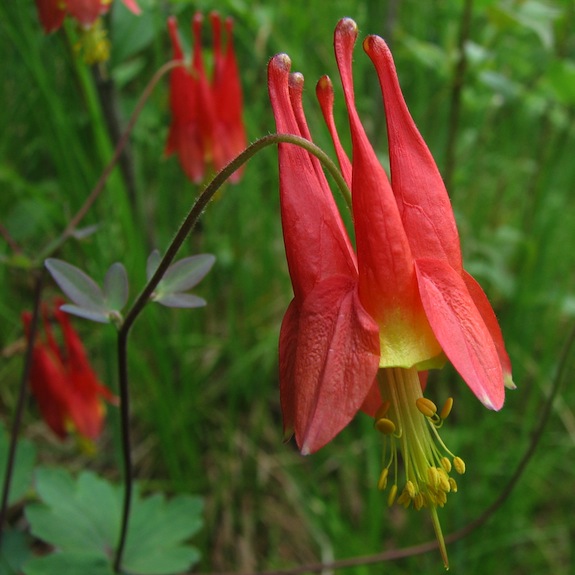Plants Flower Nearly a Month Earlier Than They Did A Century Ago
In 2012, many plants in the eastern U.S. flowered earlier than in any other year on record
![]()

The wild columbine, among other plants, now flowers nearly a month earlier than it did in the 1800s. Image via Wikimedia Commons
Compared to extreme drought, blistering heat, massive wildfires and tropical cyclones, the latest indicator of climate change is unexpectedly attractive: early spring flowers. According to a study published today in the journal PLOS ONE, unusually warm spring weather in 2010 and 2012 at a pair of notable sites in the eastern U.S. led to the earliest spring flowering times on record—earlier than any other time in the last 161 years.
The researchers involved, from Boston University, the University of Wisconsin and Harvard, examined the flowers at two sites well-known for their roles in the early environmental movement: Walden Pond, where Henry David Thoreau started keeping flowering records back in 1852, and Dane County, Wisc., where Aldo Leopold first recorded flowering data in 1935.
“We were amazed that wildflowers in Concord flowered almost a month earlier in 2012 than they did in Thoreau’s time or any other recent year, and it turns out the same phenomenon was happening in Wisconsin where Aldo Leopold was recording flowering times,” lead author Elizabeth Ellwood of Boston University said in a statement. “Our data shows that plants keep shifting their flowering times ever earlier as the climate continues to warm.”
In Massachusetts, the team studied 32 native spring flowering plant species—such as wild columbine, marsh marigold and pink lady slipper—for which average flowering dates had been fairly well-documented between Thoreau’s time and our own. They found that the plants’ flowering dates had steadily moved earlier as temperatures increased—Thoreau saw them flower on May 15, while they flowered on April 25 and 24 in 2010 and 2012, respectively. In the two years studied, 27 of the 32 species had their earliest flowering date ever.
In Wisconsin, they examined 23 species with similarly thorough records and found even more dramatic shifts. Between the 1930s and the present day, the plants’ average flowering date moved from May 7 to April 13, and 19 of the 23 species studied set records in either 2010 or 2012. On the whole, the researchers found that the plants examined in both locations flowered 4.1 days earlier for every 1 degree Celsius increase in average spring temperature.
There’s little disagreement among scientists that climate change, as a whole, is a fearful proposition. But, interestingly, some botanists might actually see these findings as encouraging for the plants in particular. Those studied, at least, seem able to adapt to the warmer springs and shorter winters by flowering earlier, rather than missing out on crucial growing time—a flexibility that bodes well for their future in a warming climate.
Of course, this is only a stop-gap measure, as the scientists suspect that there is some flowering threshold the plants cannot pass. If winters get so short that these flowering plants have no time at all to go dormant, it would conceivably alter their annual growth cycle to an extent that threatens their survival—or allows plants from warmer areas to move in and outcompete the natives.
/https://tf-cmsv2-smithsonianmag-media.s3.amazonaws.com/accounts/headshot/joseph-stromberg-240.jpg)
/https://tf-cmsv2-smithsonianmag-media.s3.amazonaws.com/accounts/headshot/joseph-stromberg-240.jpg)